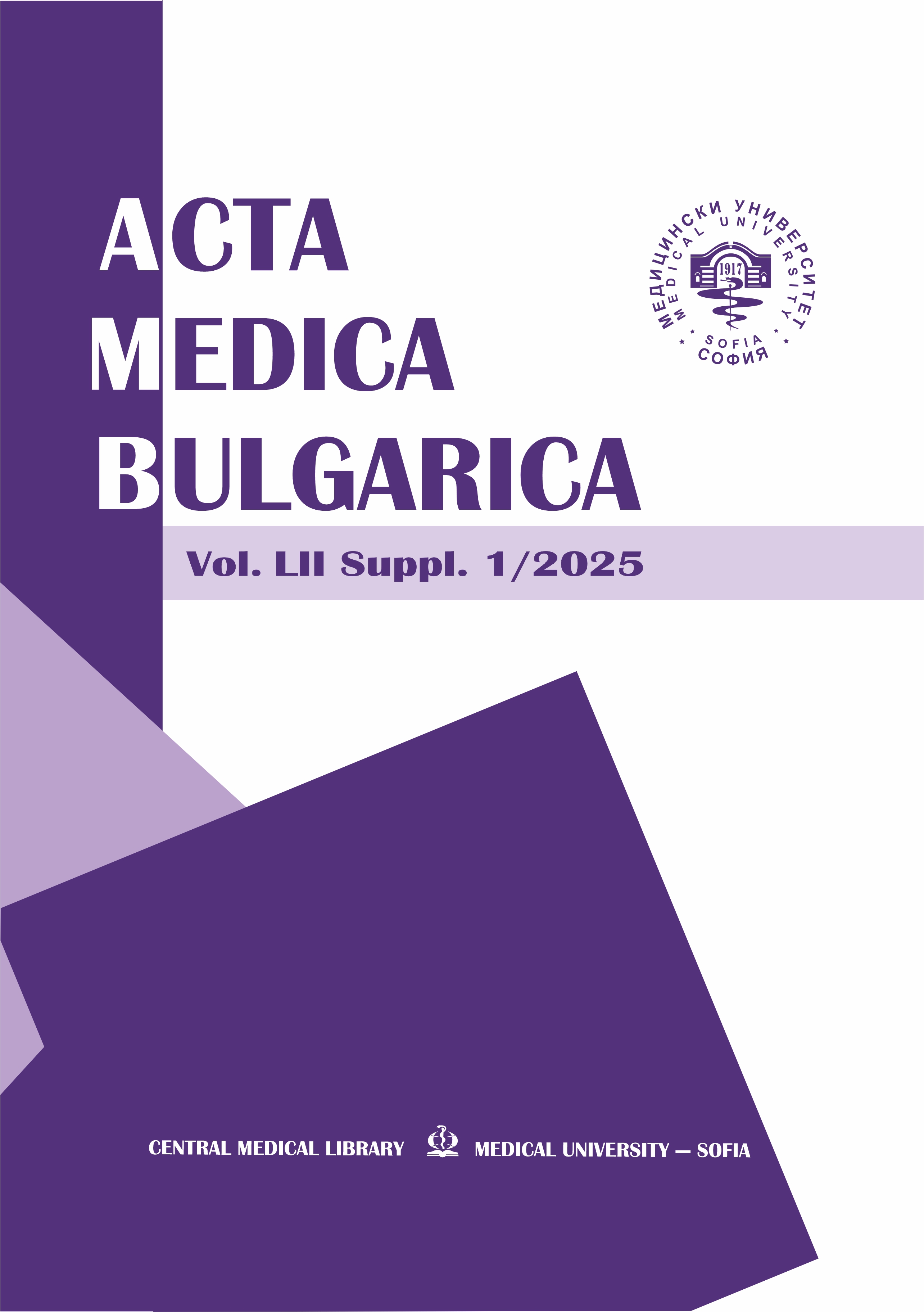A rare neurosurgical challenge:brain meningioma with epidural hematoma
DOI:
https://doi.org/10.2478/AMB-2025-0020Keywords:
meningioma of the brain, histology of meningiomas, epidural hematoma, surgical complications, coagulation disorders and epidural hematoma, benign brain tumors, disseminated intravascular coagulopathyAbstract
Brain meningiomas are predominantly benign extracranial brain tumors arising from the arachnoid cells of the meninges. According to their anatomical localization and trapping site, they are arranged in diff erent groups. The World Health Organization categorizes meningiomas according to their malignancy and classifies them into three types, each of which includes a diff erent histological type of meningioma. The vast majority of meningiomas are benign and recurrence depends largely on surgical resection and subsequent radiotherapy. The main methods in the diagnosis of central nervous system meningiomas are computed axial tomography and magnetic resonance imaging enhanced with contrast material, the radiological hallmarks of meningiomas being the presence of homogeneous filling of the tumor with contrast and a „dural tail“, which are among the key pathognomonic features of an extraaxial tumor. Surgical treatment is rarely challenging, except in cases of a richly vascularized tumor, extension of the latter to venous sinuses, and atypical localization of meningiomas. Achieving a Simpson grade I or II resection signifi cantly reduces the risk of tumor recurrence. A rare type of complication is postoperative epidural hematoma at the site of the performed craniotomy or at a diff erent site from it, which leads to a rapid and progressive deterioration of the general brain condition. We present a case of a 46-year-old woman with invasive breast cancer and meningothelial meningioma located frontally (parasagittally) on the left with marked compression of the underlying brain parenchyma, leading to general cerebral and focal neurological symptomatology. Simpson grade I removal of the meningioma was performed. Postoperatively, the patient developed a state of disseminated intravascular coagulopathy, with worsening of the general cerebral condition to coma, from the development of a left parietotemporal epidural hematoma. Timely diagnosis and operative treatment led to a favorable outcome from the complications that developed.
References
Ogasawara C, Philbrick BD, Adamson DC. Meningioma: A Review of Epidemiology, Pathology, Diagnosis, Treatment, and Future Directions. Biomedicines. 2021;9(3):319. doi:10.3390/biomedicines9030319.
Ostrom QT, Cioffi G, Gittleman H, et al. CBTRUS Statistical Report: Primary Brain and Other Central Nervous System Tumors
Diagnosed in the United States in 2012-2016. Neuro Oncol. 2019 Nov 1;21(Suppl 5):v1-v100. doi: 10.1093/neuonc/noz150.
Huntoon K, Toland AMS, Dahiya S. Meningioma: A Review of Clinicopathological and Molecular Aspects. Front Oncol. 2020 Oct 23;10:579599. doi: 10.3389/fonc.2020.579599.
Buerki RA, Horbinski CM, Kruser T, et al. An overview of meningiomas. Future Oncol. 2018 Sep;14(21):2161-2177. doi:10.2217/fon-2018-0006.
Goldbrunner R, Stavrinou P, Jenkinson MD, et al. EANO guideline on the diagnosis and management of meningiomas. Neuro Oncol. 2021 Nov 2;23(11):1821-1834. doi: 10.1093/neuonc/noab150.
Maggio I, Franceschi E, Tosoni A, et al. Meningioma: not always a benign tumor. A review of advances in the treatment of meningiomas. CNS Oncol. 2021 Jun 1;10(2):CNS72. doi:10.2217/cns-2021-0003.
Chung HJ, Park JS, Park JH, Jeun SS. Remote Postoperative Epidural Hematoma after Brain Tumor Surgery. Brain Tumor Res Treat. 2015 Oct;3(2):132-7. doi: 10.14791/btrt.2015.3.2.132.
Jeon JS, Chang IB, Cho BM, et al. Immediate Postoperative Epidural Hematomas Adjacent to the Craniotomy Site. J Korean Neurosurg Soc. 2006;39:335-339. https://www.jkns.or.kr/upload/pdf/0042006064.pdf
Torp SH, Solheim O, Skjulsvik AJ. The WHO 2021 Classificationof Central Nervous System tumours: a practical update on what neurosurgeons need to know-a minireview. Acta Neurochir (Wien). 2022 Sep;164(9):2453-2464. doi: 10.1007/s00701-022-05301-y.
Cai C. Meningioma. CNS & pituitary tumors. [Internet]. Available from: https://www.pathologyoutlines.com/topic/cnstumormeningiomageneral.html. [Cited September 12th, 2024].
Wiemels J, Wrensch M, Claus EB. Epidemiology and etiology of meningioma. J Neurooncol. 2010 Sep;99(3):307-14. doi:10.1007/s11060-010-0386-3.
Huang RY, Bi WL, Griffi th B, et al. International Consortium on Meningiomas. Imaging and diagnostic advances for intracranial meningiomas. Neuro Oncol. 2019 Jan 14;21(Suppl 1):i44-i61. doi: 10.1093/neuonc/noy143.
Chotai S, Schwartz TH. The Simpson Grading: Is It Still Valid? Cancers (Basel). 2022 Apr 15;14(8):2007. doi: 10.3390/cancers14082007.
Yu J, Yang H, Cui D, Li Y. Retrospective analysis of 14 cases of remote epidural hematoma as a postoperative complication after intracranial tumor resection. World J Surg Oncol. 2016 Jan 6;14(1):1. doi: 10.1186/s12957-015-0754-8.
Eom KS, Kim JM, Kim TY. Disseminated intravascular coagulation in a patient undergoing removal of metastatic brain tumor. J Korean Neurosurg Soc. 2008 Nov;44(5):341-4. doi:10.3340/jkns.2008.44.5.341. Epub 2008 Nov 30.
Downloads
Published
Issue
Section
License
Copyright (c) 2025 K. Bechev, Ts. Stoitsev, D. Markov, V. Aleksiev, G. Markov (Author)

This work is licensed under a Creative Commons Attribution-NonCommercial-NoDerivatives 4.0 International License.
You are free to share, copy and redistribute the material in any medium or format under these terms.


 Journal Acta Medica Bulgarica
Journal Acta Medica Bulgarica 